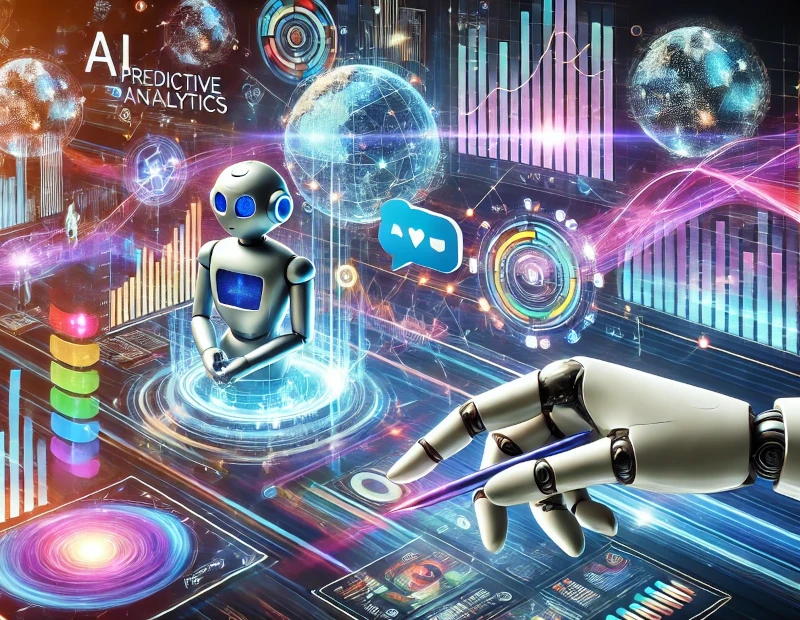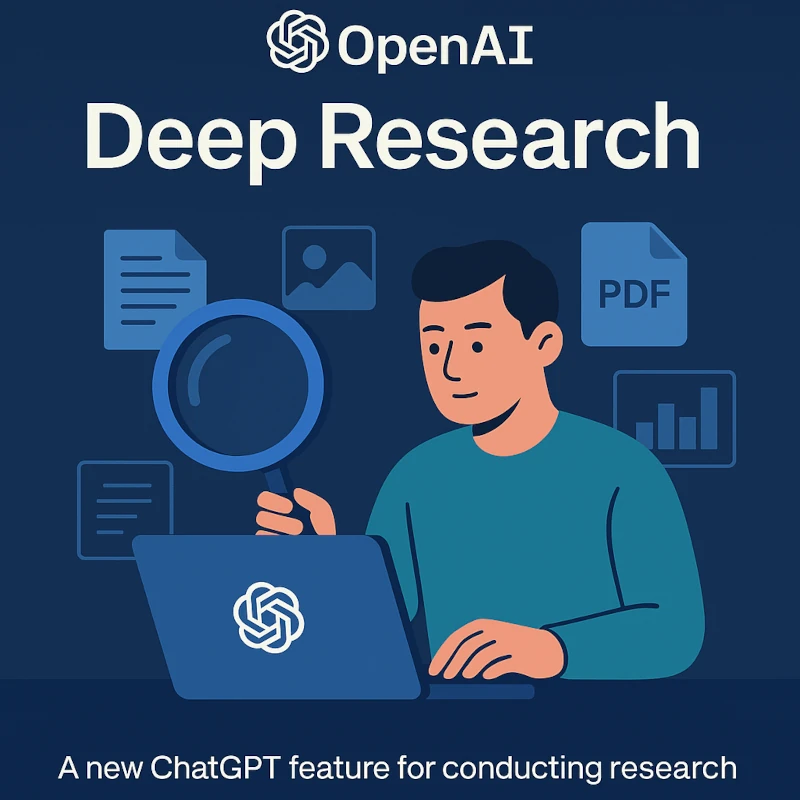OpenAI Deep Research: Pioneering the Future of Artificial Intelligence
Artificial Intelligence (AI) continues to reshape the technology landscape, and at the forefront of this revolution is OpenAI Deep Research. With groundbreaking innovations and a steadfast commitment to responsible AI, OpenAI is setting the pace for research, development, and practical applications. This progressive AI will transform industries and enhance everyday life.
The launch of OpenAI Deep Research comes amidst an intensifying rivalry in the AI research space. Just days after DeepSeek AI made waves with its own research-focused capabilities, DeepSearch followed suit, signaling a heated competition among AI giants. Now, OpenAI is making its move with Deep Research—an AI system designed to take autonomous research workflows to the next level. This latest release not only responds to queries but actively plans, adapts, and executes comprehensive research strategies with an unprecedented level of sophistication.
In this blog, we’ll explore the world of OpenAI Deep Research. We draw insights from OpenAI’s official announcement, a recent YouTube presentation, and a detailed transcript discussion. We’ll highlight its top features, performance improvements, and the transformative role of AI agents in executing multi-step research workflows.
The Essence of OpenAI Deep Research
OpenAI Deep Research represents a concerted effort to push AI beyond conventional limits. Unlike previous models that merely responded to queries, this AI agent is capable of planning and executing multi-step research workflows. As explained in the transcript, “this is their second AI agent after Operator,” and it is designed to conduct complex research tasks. Complex tasks ranging from scouring dozens of websites for information to synthesizing a comprehensive report that a human research analyst might produce.
The agent works by first asking clarifying questions to ensure it fully understands the research request. Once it has all necessary details, it embarks on a systematic exploration—searching websites, gathering data from images, PDFs, and textual content—to compile a detailed research report. This process can take anywhere from 5 to 30 minutes,. Hence, effectively condensing what would take human experts hours into a concise, reliable output.
Top Features of OpenAI Deep Research
- Cutting-Edge Multi-Step Research Capabilities:
Deep Research is not just about quick answers—it’s about deep, analytical thinking. The AI agent meticulously plans and executes each step. It ensures that it gathers information from a wide range of sources and provides detailed, context-rich responses. Whether it’s for academic research, market analysis, or even hyper-personalized shopping recommendations, the agent’s multi-step workflow is designed to deliver thorough and precise results. - Dynamic Clarification and Adaptation:
Before initiating its research, the agent asks clarifying questions to fine-tune its understanding of the task. As described in the transcript, it “will ask some clarifying questions just to make sure… it does have what you’re asking for.” This ensures that its subsequent actions align perfectly with user expectations. This dynamic interaction sets it apart from earlier models. - Integrated Web Browsing and Data Analysis:
Powered by an upcoming OpenAI 03 model optimized for web browsing and data analysis, Deep Research can efficiently crawl web pages, analyze images and interpret PDFs. It can even generate visualizations via its built-in code interpreter. This capability allows it to transform massive amounts of unstructured data into clear, actionable insights. - Real-Time Adaptation and Backtracking:
One of the transcript’s key insights is that the AI agent “backtracks and reacts to real-time information where necessary.” This means that if the research veers off course, the agent can recalibrate its approach to stay aligned with the original query. Such real-time adaptability ensures that the final report remains accurate and on target.
Performance Benchmarking: Accuracy Gains
A standout achievement in the latest OpenAI Deep Research is its significant improvement in model accuracy. Recent evaluations have demonstrated a high accuracy rate of 26.6% on specialized tasks—a substantial enhancement over previous iterations of ChatGPT. The transcript highlights that this improvement was driven by advanced reinforcement learning techniques and dynamic hyperparameter optimization. As one expert noted, “By allowing AI agents to autonomously explore and optimize across vast parameter spaces, we achieved a level of precision that was previously unattainable.” This leap reflects OpenAI’s commitment to evolving its models through continuous experimentation and real-time adaptation.
AI Agents in Deep Research: Real-World Examples from the Transcript
The integration of AI agents is a critical element of OpenAI Deep Research, and the transcript offers several compelling examples of their transformative potential:
- Autonomous Multi-Step Research Workflow:
The AI agent begins by gathering input from the user, asking clarifying questions to ensure it understands the research task. It then proceeds to methodically search through numerous websites, collecting data from texts, images, and PDFs. The agent “starts researching” and highlights each step of its process. It ultimately compiles a comprehensive research report with a sidebar summarizing all cited sources. This autonomous workflow exemplifies how the agent can produce a level of detail comparable to that of a professional research analyst. - Integrated Data Analysis and Visualization:
Another highlight is the agent’s ability to use a code interpreter to create graphs and visualizations. The AI’s capacity to integrate visual data alongside textual information is transformative. It’s capable of generating tables with detailed metrics for business applications or plotting data for scientific analysis. Additionally, it’s able to develop graphs within Python and embed those visualizations directly into its report. As a result, demonstrating a seamless blend of data analysis and presentation. - Real-Time Adaptation and Quality Control:
The agent’s design includes a built-in mechanism for backtracking if it deviates from the original research goal. This ensures that even if early research steps lead it astray, the system can recalibrate. Therefore, delivering a final detailed and on target report . As one of the speakers explained, “keeping it on track is obviously something that’s really important,” which is crucial for maintaining high-quality outputs in time-sensitive research scenarios.
Additionally, the transcript notes that Deep Research is currently available to ChatGPT Pro users (at $200/month) with a limit of 100 queries per month. Then, Deep Research plans to expand access to ChatGPT Plus, mobile, and desktop applications soon.
The Road Ahead
As OpenAI Deep Research continues to evolve, its applications will undoubtedly expand across various domains. By integrating ethical considerations with advanced technical capabilities, OpenAI is not only pushing technological boundaries but also ensuring that these innovations contribute positively to society. Whether it’s enhancing financial analyses, revolutionizing scientific research, or even aiding in hyper-personalized shopping recommendations, the advancements from OpenAI Deep Research signal a new era where precision, reliability, and ethical integrity drive AI innovation.
For those interested in learning more, be sure to review OpenAI’s official announcement and explore the detailed insights offered in the YouTube video and transcript.
Conclusion
OpenAI Deep Research is redefining what’s possible in the realm of Artificial Intelligence. It shows significant performance improvements. For example, it achieves 26.6% accuracy on specialized tasks. It also integrates autonomous AI agents for multi-step research workflows. This innovation paves the way for technology to work seamlessly with human ingenuity. The transcript reveals how Deep Research automates complex tasks while delivering high-quality, adaptive, and context-aware results. As we push AI limits, OpenAI Deep Research promises to enhance our lives, drive progress, and transform industries worldwide.
Robert J. Villemure is a digital marketing, e-commerce, and web development expert with over 20 years of experience. As the founder of OptimizexAI, he helps businesses across healthcare, hospitality, higher education, and e-commerce harness AI to drive growth and innovation. Previously, he led large-scale SEO and digital initiatives at Barton Associates and Wynn Encore Boston Harbor, optimizing websites, boosting engagement, and managing multimillion-dollar digital campaigns. A graduate of the MIT Sloan + CSAIL AI program, Robert specializes in AI-driven marketing, predictive analytics, and technical SEO. Through OptimizexAI, he shares insights and strategies to make AI and digital transformation accessible for businesses of all sizes. Connect with him.



